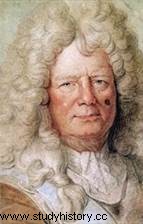 Key figure of the reign of Louis XIV, Sébastien le Prestre (1633-1707), marquis of Vauban , was a specialist in siege and fortification techniques. Coming from the lower nobility, he had a rich but eventful career in the service of the Sun King, for whom he exercised his talents as a military engineer. Much more than an expert in poliorcetics, the art of besieging cities, he is also at the origin of the concept of the "French square", a network of fortifications and military works that protect the borders of the kingdom. Self-taught, his mathematical and visionary vision of the world indeed foreshadowed the philosophers of the Enlightenment, as did his virulent criticism of royal taxation, which earned him a few "years of misery". Although in disgrace, he will keep the respect of the king until his death.
Key figure of the reign of Louis XIV, Sébastien le Prestre (1633-1707), marquis of Vauban , was a specialist in siege and fortification techniques. Coming from the lower nobility, he had a rich but eventful career in the service of the Sun King, for whom he exercised his talents as a military engineer. Much more than an expert in poliorcetics, the art of besieging cities, he is also at the origin of the concept of the "French square", a network of fortifications and military works that protect the borders of the kingdom. Self-taught, his mathematical and visionary vision of the world indeed foreshadowed the philosophers of the Enlightenment, as did his virulent criticism of royal taxation, which earned him a few "years of misery". Although in disgrace, he will keep the respect of the king until his death.
Vauban's youth
Sébastien le Prestre Marquis de Vauban was born in 1633 in Saint-Léger-de-Foucherets, in the Morvan. He was baptized on May 15, 1633, as "son of Albin Le Prestre, squire, and of damsel Edmée de Carmignolle, daughter of an esquire" . Orphaned, he was entrusted to M. de Fontaines, prior of the college of Saint-Jean Semur-en-Auxois who gave him a solid basic education. From the age of 17, he began his career in arms, a cadet in the army of the Prince of Condé. We are then in the middle of the Fronde, and Vauban is thus alongside the enemies of the young Louis XIV. 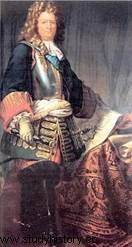 The young man quickly became famous during the siege of Sainte-Menehould (1652). However, he was taken prisoner a little later by the king's troops, and again showed his bravery by refusing to dismount. Cardinal de Mazarin then spotted him and decided to rally him to the royal cause, as he had already done with other rebels. By a wink of fate, it is once again in Sainte-Menehould that Vauban stands out, this time in the opposing camp, by participating in the reconquest of the city, then in the repairs of its fortifications.
The young man quickly became famous during the siege of Sainte-Menehould (1652). However, he was taken prisoner a little later by the king's troops, and again showed his bravery by refusing to dismount. Cardinal de Mazarin then spotted him and decided to rally him to the royal cause, as he had already done with other rebels. By a wink of fate, it is once again in Sainte-Menehould that Vauban stands out, this time in the opposing camp, by participating in the reconquest of the city, then in the repairs of its fortifications.
From then on, having become ordinary engineer to the king in 1655, Vauban took part in most of the major sieges of the late 1650s, where he stood out for his courage (he was wounded several times) than by his military skill, particularly in poliorcetics. On the other hand, if he gradually rose in rank, his modest origins slowed down his career for a time compared to his main competitors.
The Peace of the Pyrenees (1659) allowed him to return home and marry Jeanne d'Osnay. But quickly, he must leave, and will rarely see his wife and granddaughters. Louis XIV ordered him to dismantle the fortifications of Nancy, then regularly entrusted him with other missions. Throughout his career, Vauban never stopped riding and being in the field. Vauban left in 1662 for Dunkirk, which Louis XIV had just taken back from the English; he was in charge of directing the work intended to consolidate the main French strategic support points in the North. He obtained the surrender of several places, which he later fortified. Wounded during the siege of Lille, he was appointed lieutenant of the Sun King's guards.
Sieges and fortifications
Having gone to the strongholds of Flanders in order to consolidate them, he then drew up the plans for the fortifications of Cherbourg before moving to Franche-Comté and receiving the place Governor of Lille, in charge of the defense of the northern territories. This is how he drew up the plan in relief of the citadel which, sent to Louis XIV, is at the origin of the splendid collection of models of strongholds preserved today at the Invalides. Vauban endeavored to design strongholds intended not only for the invincibility of the place but also for the healthiness of the living conditions of the soldiers in garrison.
He wrote, at Louvois' request, a memoir to serve as an instruction in the conduct of sieges, certain principles of which are still used today by armies around the world. Vauban travels to the western French coasts to give very precise instructions for the ports vulnerable to attacks by the Dutch fleet; in 1674 he received the rank of brigadier general.

Vauban was led, during the siege of Cambrai, in 1677, to oppose the military ideas of Louis XIV for the protection of troops; this act of courage earned him the rank of field marshal. No important siege was henceforth undertaken without the advice of Vauban. Although his promotions were not as rapid as he would have liked (especially given his record of service), Vauban was regularly rewarded by King Louis XIV, by governments (Citadel of Lille in 1668), or ranks (Brigadier in 1677, lieutenant general in 1688).
When the friend and master, the Chevalier de Clerville, disappears, he accepts the post of General Commissioner of Fortifications (1678); in this place, he succeeded in silencing the rivalries between Colbert and Louvois. He then obtained the Grand Cross of Saint-Louis in 1693, and became an honorary member of the Academy of Sciences in 1699. He was finally marshal in 1703, becoming the first engineer to obtain this distinction.
Fortify like Vauban
For the most part, Vauban only perfected the systems of bastioned fortifications invented by Italian engineers and architects in the 16th century. But he did it methodically. In order to reduce construction costs, which were often considerable, he sought - and this was new at the time - to standardize estimates, contracts, materials, procedures and construction processes. Standardization also concerns the establishment of standard plans for buildings (barracks, powder magazines, governor's residence, private residences, works of art and public buildings, for example). He even had standard files drawn up for engineers and contractors.
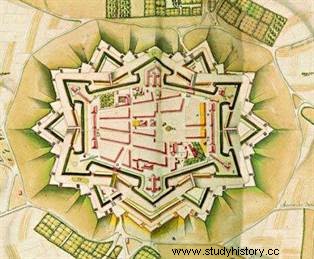 However, Vauban was always concerned with adapting to the topography the squares or works that he designed entirely or reshuffle. In addition, throughout his career, he made many inspection trips to many regions of France. This provides him with the material for a number of projects adorned with drawings with conventional colors to represent architectures and objects. They are extraordinary sources of information on the techniques of the time.
However, Vauban was always concerned with adapting to the topography the squares or works that he designed entirely or reshuffle. In addition, throughout his career, he made many inspection trips to many regions of France. This provides him with the material for a number of projects adorned with drawings with conventional colors to represent architectures and objects. They are extraordinary sources of information on the techniques of the time.
Fascinated by fortifications, Louis XIV decided on the work to be carried out, based on reports from Vauban and his engineers, relayed by Louvois, Colbert and their successors. Then, it is up to the stewards and governors of places to make contracts with contractors for the construction sites. They must also carry out the requisitioning of workers, according to the system of corvées in particular. Vauban fortified more than one hundred and sixty squares and works, thirty-three of which were completely built. More than 600 million pounds were spent during the reign of Louis XIV for the construction or the reorganization of fortified systems. This work required thousands of men and considerable material resources.
The invention of the French “pré carré”
Travelling the country in all directions, Vauban gradually provided France with a veritable belt of fortifications. In the 1680s, he focused on strengthening a port network and creating new fortresses on the Atlantic coast, because he believed that a solid coastal military establishment would protect France from the powerful Anglo-French fleets. Dutch. Assisted by Catinat, Vauban, during these months, gave France the effective means of winning offensive and defensive wars. A more or less direct promoter of projects such as the Maintenon aqueduct or the Deux-Mers canal, Vauban was no less passionate about statistics.
His experience and skills, but also his outspokenness, made him listened to by the king's main ministers, such as Colbert and Louvois, and especially by Louis XIV. -same. However, it was through Louvois, in 1673, that he convinced the Sun King to “hold his deed with both hands” , that is to say, to set up at the borders (often moving at the time) a belt of strongholds, which Vauban himself called “the square meadow” . This delimited and protected space was to allow the king to fully exercise all his sovereignty there.
Vauban master of poliorcetics
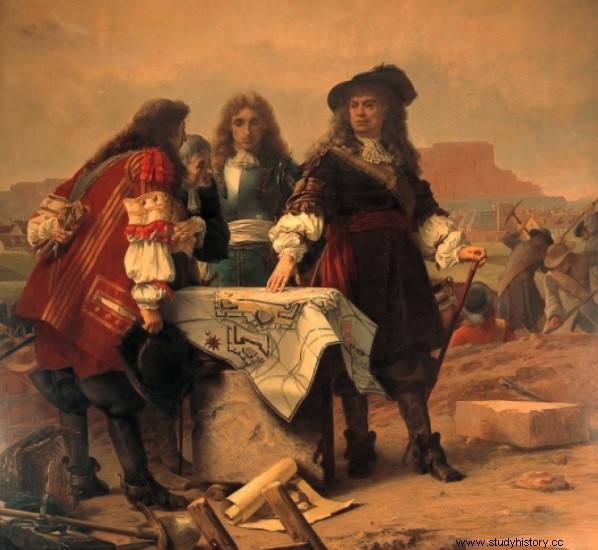 In the service of Louis XIV for more than fifty years, Vauban took part in most of the sieges marking the many wars of reign, including the famous siege of Maastricht (1673) during the Dutch War. This experience led the king to order from him, for his grandson, a treatise on the attack on places. Vauban did so in 1704, in a manuscript in which he detailed, with supporting sketches, the twelve phases of the siege. A book that quickly became a reference for the time, beyond the French borders. We now speak of a “Vauban seat”. his mastery of the subject will leave to posterity a famous saying:“City besieged by Vauban, city taken; city defended by Vauban, impregnable city”.
In the service of Louis XIV for more than fifty years, Vauban took part in most of the sieges marking the many wars of reign, including the famous siege of Maastricht (1673) during the Dutch War. This experience led the king to order from him, for his grandson, a treatise on the attack on places. Vauban did so in 1704, in a manuscript in which he detailed, with supporting sketches, the twelve phases of the siege. A book that quickly became a reference for the time, beyond the French borders. We now speak of a “Vauban seat”. his mastery of the subject will leave to posterity a famous saying:“City besieged by Vauban, city taken; city defended by Vauban, impregnable city”.
At the end of the 1680s, Vauban was at the height of his career, which allowed him to buy the Château de Bazoches, in his native Morvan, to which he remained attached. Nevertheless, the engineer began to be critical of the expensive reign of Louis XIV.
The “Idleness”
The 1690s are often referred to as "the years of misery" in Vauban's life. Indeed, his rides to the four corners of France allow him to realize the growing misery of the people, largely due to the financial pressures caused by repeated wars. Vauban also opposed government financiers, and did not behave like a courtier.
Vauban's reflections, from the end of the 1680s, led him to write memoirs which show that he was much more than a genius engineer. These are the "Idleness" , his major work, twelve volumes between 1689 and 1705. He discusses the situation of the kingdom, its population, and many other subjects such as botany, the colonies of America, forests, and obviously his favorite themes. , such as the siege (“The attack on the squares” , cited above, is the eighth volume of "Idleness" ).
This freedom of thought earns him enmity, especially since he does not hesitate to criticize the kingdom's fiscal policy, and even to propose reforms such as the Royal Tithe. He did not hesitate to propose a bold tax reform, the application of which would undoubtedly have greatly modified the history of France in the 18th century:Vauban explained the advantages of a tax which would be levied directly by the royal administration without any exceptions or privileges. The book is seized as soon as it is published and causes the disgrace of its author. He goes so far as to oppose the revocation of the Edict of Nantes, which aggravates his case.
The death of Vauban
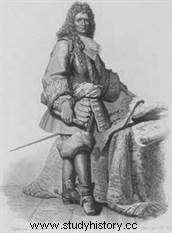 In the early 1700s, the reign of Louis XIV no longer had the luster of the 1670s-1680s. Vauban, even if he becomes Marshal of France, is just as aging, and his critical writings are irritating. In the last years of his life, Vauban nevertheless decided to have his work bound and printed himself, notably "La Dîme Royale" , believing that it must remain useful to the kingdom, despite a context that does not favor reforms.
In the early 1700s, the reign of Louis XIV no longer had the luster of the 1670s-1680s. Vauban, even if he becomes Marshal of France, is just as aging, and his critical writings are irritating. In the last years of his life, Vauban nevertheless decided to have his work bound and printed himself, notably "La Dîme Royale" , believing that it must remain useful to the kingdom, despite a context that does not favor reforms.
When Vauban died on March 30, 1707, in Paris, the monarchy did not give him official honors, thus showing that he was in the way at the highest level. He is not, however, a victim of the king, as we often read. Louis XIV would even have spoken of him "with great esteem and friendship" , shortly before his death. Vauban nevertheless received the honors of the Academy of Sciences, through the mouth of Fontenelle. His mortal remains were deposited in the Château de Bazoches then dispersed during the Revolution of 1789. Only the heart was found, which was placed in the invalids in 1808 by order of Napoleon.
Vauban wrote numerous works on the military and civil planning of the kingdom. He had taken part in about 53 sieges and would have been directly linked to 140 very important military engagements. A curious mind, precursor of the Age of Enlightenment and endearing personality, we owe him more than 200 fortresses and fortified works, which have left many traces in the urban landscape.
Bibliography
- Vauban, the inventor of modern France, by Dominique Le Brun. Vuibert, 2016.
- M. Barros, N. Salat, T. Sarmant, Vauban, territorial intelligence, ed. N. Chaudun, 2006.
- Vauban and the invention of the French meadow, by Bernard Crochet. West-France, 2014.
